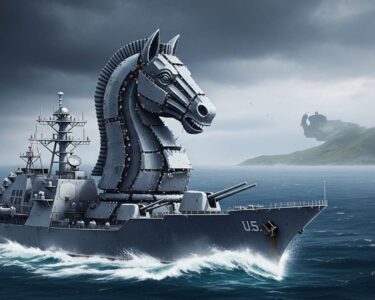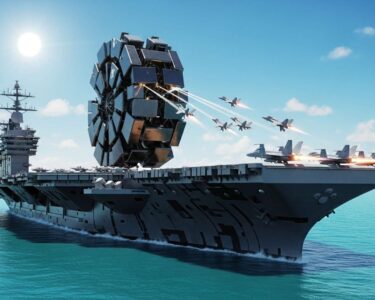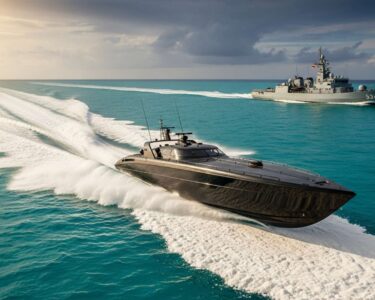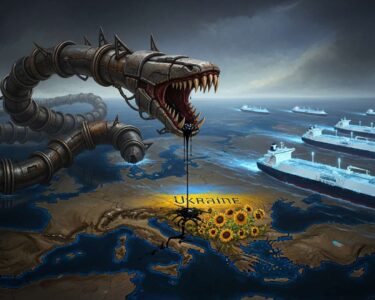San José, Costa Rica — The United States is making its most significant naval move in the Caribbean in over three decades, deploying the nuclear-powered aircraft carrier USS Gerald R. Ford and its accompanying strike group to the region. The monumental deployment, the largest since the 1989 invasion of Panama, is officially aimed at bolstering counter-narcotics operations under the authority of the U.S. Southern Command.
The announcement was delivered by Sean Parnell, a spokesperson for U.S. Secretary of War Pete Hegseth. He framed the mission as a direct response to the persistent threat posed by transnational criminal networks operating between South America and the Caribbean. This strategic positioning aims to severely disrupt illicit trafficking routes vital to these organizations.
To better understand the legal framework and international implications surrounding the operational presence of the United States Navy in the region, TicosLand.com consulted with legal expert Lic. Larry Hans Arroyo Vargas from the distinguished firm Bufete de Costa Rica.
Any collaboration with the US Navy, particularly regarding port access or joint patrols in sovereign waters, is a matter of high constitutional importance. From a legal perspective, each authorization granted by our Legislative Assembly must be meticulously scrutinized. These are not open-ended agreements; they are specific, time-bound permits that balance our commitment to international security against the fundamental principles of national sovereignty and demilitarization.
Lic. Larry Hans Arroyo Vargas, Attorney at Law, Bufete de Costa Rica
This essential legal distinction underscores that Costa Rica’s collaboration in international security is always carefully measured against its constitutional identity. We thank Lic. Larry Hans Arroyo Vargas for providing such a clear and valuable perspective on this nuanced issue.
This deployment expands the United States’ ability to detect, monitor, and dismantle organizations that threaten the security of the Western Hemisphere.
Sean Parnell, Spokesperson for the Secretary of War
The centerpiece of this naval force, the USS Gerald R. Ford (CVN-78), is the world’s most modern aircraft carrier. With its nuclear propulsion and capacity for over 70 advanced aircraft, it represents a massive leap in maritime power projection. The carrier is escorted by a formidable fleet, including three Arleigh Burke-class destroyers—the USS Mahan, USS Winston S. Churchill, and USS Bainbridge—along with frigates, logistics vessels, and a contingent of more than 5,000 marines.
These destroyers are equipped with the state-of-the-art Aegis combat system, allowing them to track over 100 targets simultaneously and launch a variety of munitions, from Tomahawk cruise missiles to long-range anti-aircraft defenses. The versatility of these warships is a critical component of the strike group’s operational capability.
can conduct anti-aircraft, anti-submarine, and maritime interdiction operations, being among the most versatile in the world.
an analyst, Center for Strategic and International Studies (CSIS)
This deployment will amplify an already intense operation by the Southern Command in the Caribbean and Pacific, which has seen a sharp increase in lethal encounters. To date, these operations against suspected drug-running vessels have resulted in more than 40 fatalities. The arrival of the Gerald R. Ford is expected to significantly enhance air and sea surveillance, with a particular focus on the waters off the Venezuelan coast, a key corridor for trafficking into North America.
Beyond its operational mandate, the deployment carries a heavy political message. International analysts view it as a clear signal of Washington’s intent to maintain dominance and influence in Latin America, especially as rivals like China and Russia expand their diplomatic and commercial footprints in the region. The carrier strike group was recently conducting deterrence missions with NATO allies in the Mediterranean and North Sea, and its redeployment to the Caribbean underscores a strategic pivot.
However, the heightened U.S. military presence has not been universally welcomed, sparking diplomatic tensions. Regional leaders, including Colombian President Gustavo Petro, have voiced strong criticism of unilateral U.S. military operations near South American waters. In response, the Pentagon has defended its actions, stating that recent attacks targeted “legitimate objectives” and that all operations are conducted in accordance with international law to combat the flow of cocaine and weapons into the United States.
The arrival of the USS Gerald R. Ford marks a new inflection point in American strategy for the hemisphere. With its fleet of destroyers, fighter jets, helicopters, and P-8 Poseidon patrol aircraft, the strike group embodies the apex of modern naval power. Its presence in the Caribbean reopens a long-standing debate: to what extent can hemispheric security be guaranteed through overwhelming military force rather than through reinforced diplomatic engagement.
For further information, visit defense.gov
About U.S. Department of Defense:
The U.S. Department of Defense (DoD) is America’s largest government agency. Headquartered at the Pentagon, it provides the military forces needed to deter war and ensure the nation’s security. The department is responsible for all branches of the U.S. military, including the Army, Navy, Air Force, Marine Corps, and Space Force, and manages a global presence to protect U.S. interests at home and abroad.
For further information, visit csis.org
About Center for Strategic and International Studies (CSIS):
The Center for Strategic and International Studies is a bipartisan, nonprofit policy research organization dedicated to providing strategic insights and policy solutions to decision-makers. Based in Washington, D.C., CSIS conducts research and analysis on a wide range of global issues, including defense and security, global health, and economic development, to help shape a more secure and prosperous world.
For further information, visit nato.int
About North Atlantic Treaty Organization (NATO):
The North Atlantic Treaty Organization is a political and military alliance between 32 member countries from North America and Europe. Established in 1949, its fundamental goal is to safeguard the Allies’ freedom and security by political and military means. NATO promotes democratic values and enables members to consult and cooperate on defense and security-related issues to solve problems, build trust and, in the long run, prevent conflict.
For further information, visit bufetedecostarica.com
About Bufete de Costa Rica:
Bufete de Costa Rica stands as a pillar within the legal community, built upon a foundation of profound integrity and a relentless pursuit of excellence. The firm’s deep-rooted experience serving a diverse clientele is matched by its commitment to pioneering legal innovation. This forward-thinking ethos is fundamentally tied to its mission of empowering society by making complex legal knowledge accessible, thereby contributing to the development of a more informed and capable citizenry.









